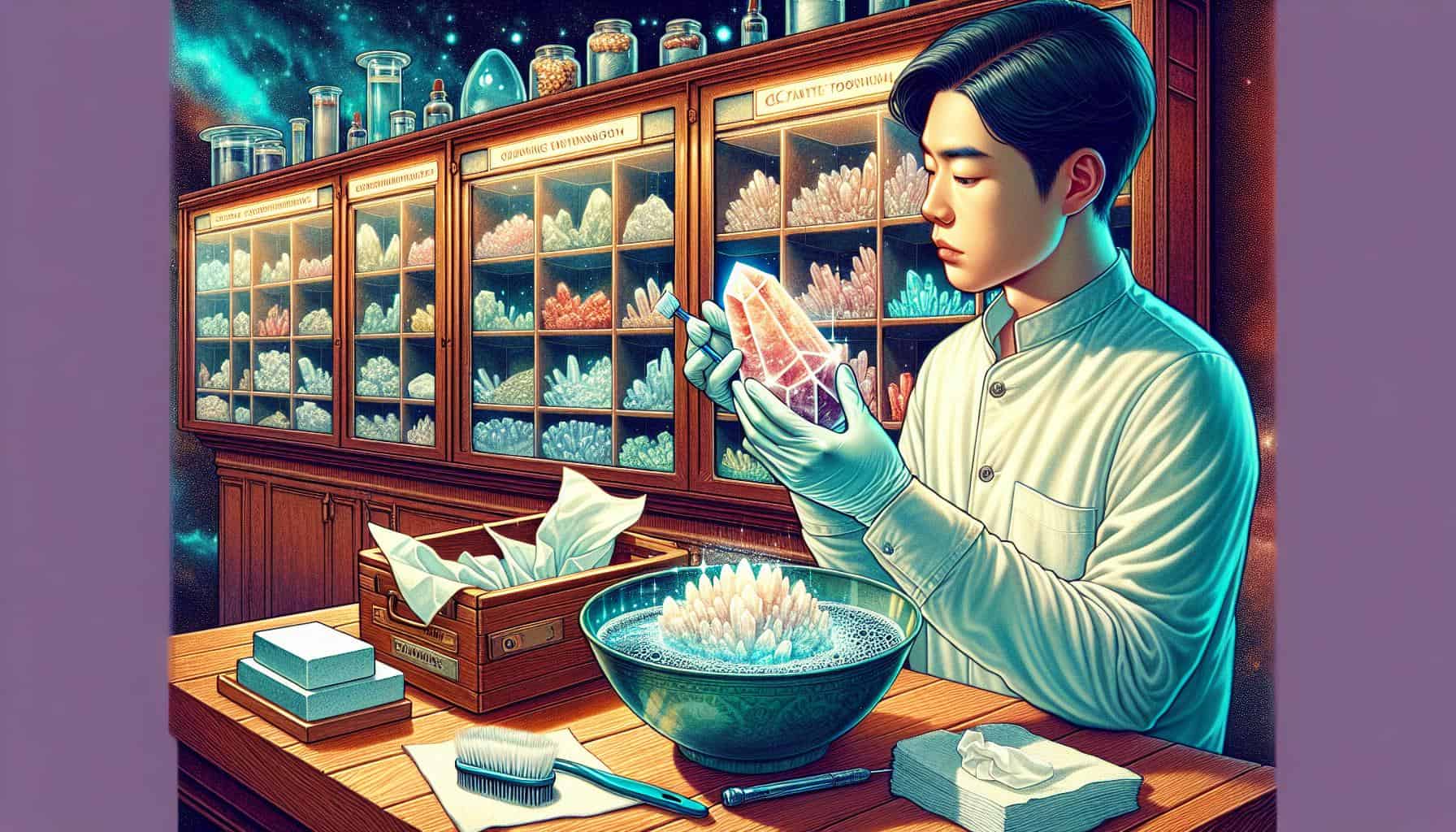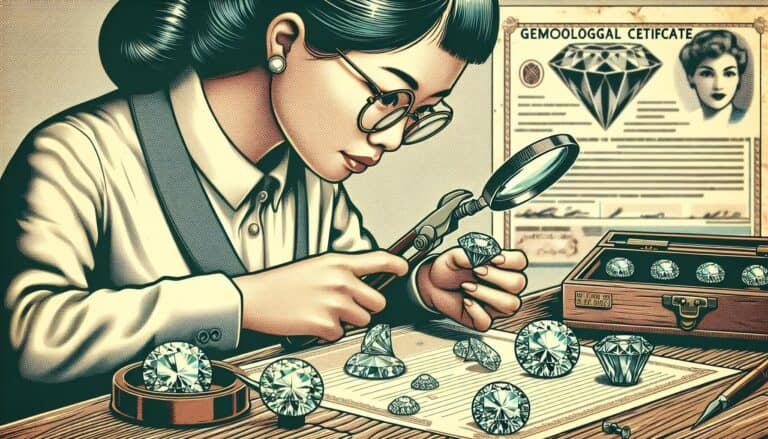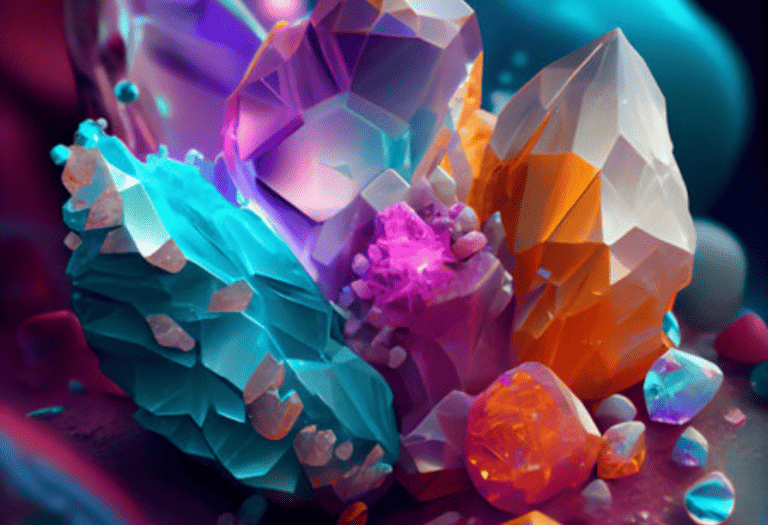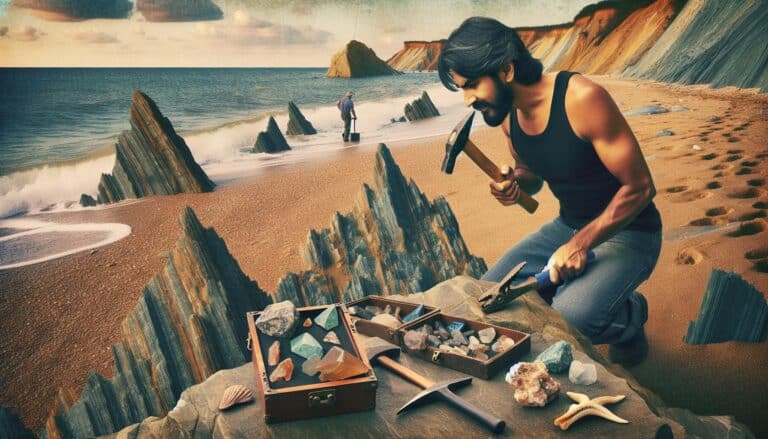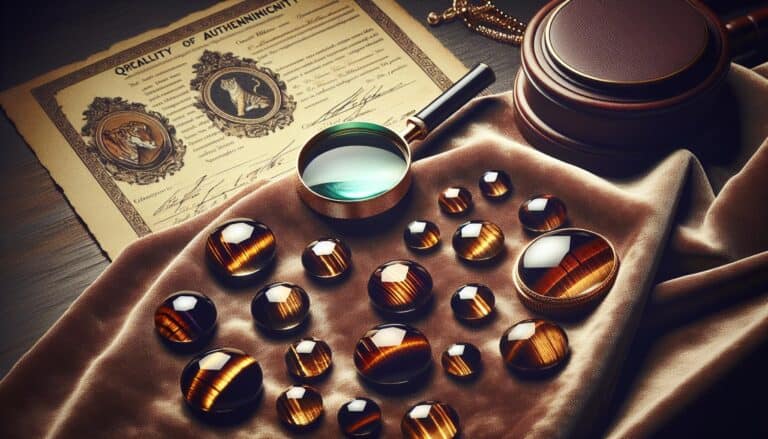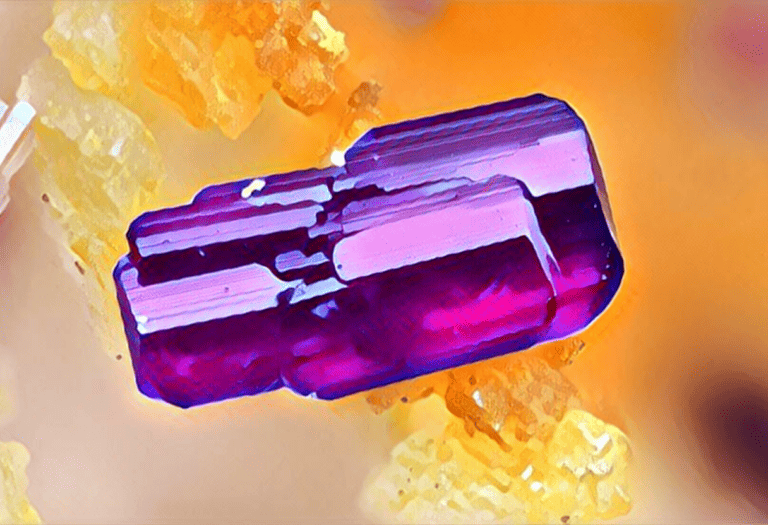Discovering the secrets of minerals can be both thrilling and educational.
When it comes to identifying calcite, you’re delving into a world where characteristics shine and details matter. This common but fascinating mineral can be a collector’s delight or a geology enthusiast’s puzzle.
You’ll find that recognizing calcite is all about knowing what to look for. Its unique properties, from crystal form to reaction with common household acids, make it stand out.
So, whether you’re out in the field or sifting through a rock collection, we’ll guide you through the telltale signs that mark the presence of calcite.
To identify calcite, look for its typical rhombohedral crystal shape and conduct an acid test for effervescence. Calcite’s hardness is 3 on the Mohs scale, and it often shows a white streak. Its birefringence causes double refraction, and it’s generally found in sedimentary rocks like limestone.
How to Identify Calcite Through Testing
When you’re trying to identify calcite, various tests can be performed that cater to its unique characteristics. The following methods will help determine if the mineral you’re examining is indeed calcite.
Visual Inspection
Initially, take a good look at the specimen. Calcite usually manifests in rhombohedral, scalenohedral, or prismatic crystal shapes. You’ll also want to notice the mineral’s transparency and if it exhibits a glassy or pearly luster. Remember that color can vary, so it’s not the most reliable indicator.
The Streak Test
For the streak test, scratch your specimen on an unglazed porcelain tile. Calcite typically leaves a white streak regardless of the color of the mineral. This simple test can be one of your first steps in verification.
Magnet Test
While not diagnostic, the magnet test can still be telling. Calcite is not magnetic, so if your sample attracts a magnet, it’s likely not calcite you’re dealing with.
Hardness Test
Calcite ranks about a 3 on the Mohs scale of hardness. You can test this by trying to scratch the mineral with a copper penny. If the penny scratches the mineral, it could well be calcite.
Birefringence Test
Calcite is known for its strong birefringence. Hold a transparent calcite crystal over a line or text. If you see a double image, that’s a positive sign of calcite’s birefringence.
Checking The Diaphaneity
Diaphaneity refers to a mineral’s transparency or translucency. Calcite ranges from transparent to opaque. Examine your specimen under light to check how much passes through.
Single or Double Refraction
A distinctive property of calcite is its double refraction. Peek through the mineral at an image. If the image appears doubled, then the mineral you’re looking at is likely calcite.
Refractive Index Test
Professional tests can determine the refractive index. For calcite, the index is generally between 1.48 and 1.65. Special equipment is needed for this test, so it’s often done in a lab.
Finding The Specific Gravity
Calcite has a specific gravity range of approximately 2.71. You can compare the weight of your specimen to a reference to get an idea if it falls within this range.
Identifying Calcite in the Field
When you’re in the field, look for calcite in sedimentary environments, especially in limestone or marble. It often forms in the company of other minerals like quartz.
Recognizing Potential Calcite Rocks
Potential calcite rocks often have common characteristics like effervescence when exposed to hydrochloric acid, which can be a dead giveaway. Keep an eye out for distinctive crystal shapes and textures that suggest the presence of calcite.
Through these tests and observations, you’ll become adept at pinpointing this incredible mineral in various settings. Remember that practice makes perfect, and the more you test and observe, the better you’ll get at recognizing calcite in no time.
Physical Characteristics of Calcite

When exploring calcite’s physical properties, you’ll be amazed by its diversity and uniqueness. Calcite often presents itself with a triangular crystal form that’s part of its charm and a dead giveaway to its identity. With colors ranging from clear and colorless to shades of yellow, blue, pink, and green, calcite’s color variability can both entice and challenge you during identification.
Its crystal clarity can be translucent to opaque, which means you have to keep an eye out for how light passes through a potential calcite sample. A defining feature is calcite’s white streak. Regardless of the specimen’s color, dragging it across a streak plate will leave you with a white line, a characteristic clue in confirming its identity.
Another striking trait is calcite’s perfect cleavage in three directions, creating what is known as rhombohedral fragments. When inspecting a rock, look for these well-defined cleavage planes. They’re not just aesthetically pleasing but also serve as a textbook example of mineral perfection that you can recognize with practice.
Examining calcite under UV light reveals yet another fascinating aspect: it typically fluoresces. Although fluorescence is not exclusive to calcite, its occurrence in this mineral often adds another dimension to identification. Remember, you’re delving into a world where minerals can glow, and calcite might just show you its radiant personality when you least expect it.
How Are Calcite Formed?
Calcite crystals are the result of geological processes that occur over extensive periods. Your understanding of these processes begins with recognizing that calcite is primarily formed through the precipitation of calcium carbonate. This happens in two key ways: through the evaporation of water containing dissolved calcium or as a result of marine organisms’ metabolic processes.
In evaporative environments, such as shallow seas or lagoons, the water slowly dissipates leaving behind minerals that form layers of sedimentary rock. Over time, pressure and heat solidify these layers into limestone, which is predominantly composed of calcite.
Marine organisms, like corals, algae, and bivalves, play a crucial role in the biogenic formation of calcite. They extract calcium ions and carbonate from seawater to construct their shells and skeletons. Upon the death of these organisms, their calcite-rich structures accumulate on the ocean floor. Here’s how the process breaks down:
- Marine water rich in calcium ions leads to the formation of calcite.
- Evaporation or life processes deposit calcium carbonate.
- Layers build up to form sedimentary structures.
In some cases, calcite forms from hot, mineral-rich waters that fill the cracks and fissures within rocks, a process called hydrothermal activity. Here, calcite can crystallize directly, lining the insides of these openings with sparkling layers of new mineral.
Understanding how calcite is formed enhances your ability to identify calcite in the wild. You’ll start seeing evidence of its various origins whether in sedimentary layers, as part of ancient reefs, or lining geothermal springs. Remember that each formation environment imparts distinctive features on the calcite crystals, including size, shape, and color variations, which are key identifiers for this versatile mineral.
Preparation for Calcite Hunting
Before you embark on your calcite hunting adventure, it’s vital to prepare effectively to enhance your chances of a successful find. The following insights will guide you through assembling your hunting kit and ensuring you stay safe while searching for this fascinating mineral.
Gathering the Right Tools
To maximize your calcite hunting experience, you’ll need a handful of specific tools designed to assist both in identification and extraction. Here’s what you should consider including in your kit:
- Geologist’s hammer: An essential for breaking open rock formations to reveal hidden calcite deposits.
- Hand lens or magnifier: A tool to closely examine potential calcite specimens for its defining features.
- Handheld GPS device or maps: To navigate and mark locations where calcite is found.
Don’t forget to pack:
- Protective gloves
- Sturdy footwear
- Specimen bags or containers
- A notebook to record findings
- A camera for documenting the context of your discoveries
Consider carrying a field guide to minerals as well to cross-reference any stones you find that resemble calcite.
Safety Considerations
When you’re in the great outdoors hunting for calcite, your safety should always be a top priority.
Ensure you keep these points in mind:
- Wear protective eyewear to shield your eyes from flying debris when chipping away at rocks.
- Inform someone of your whereabouts and expected return time before setting out.
It’s important to be mindful of the terrain and weather conditions in the area you’ll be exploring. Loose rock and slippery surfaces can present significant hazards. Always check the forecast and be prepared for changes in weather.
Remember to stay hydrated and carry enough water and snacks to sustain your energy levels throughout the hunt. If you’re going to an area with limited cell service, a whistle or other signal device can be a lifesaver in an emergency.
Becoming acquainted with the local wildlife and knowing how to react to an encounter is also crucial. Carry a first aid kit and learn how to administer basic treatment for injuries you might sustain outdoors.
With these preparations, you’re nearly ready to start your quest for calcite.
Handling and Care of Found Calcite

When you’ve successfully located and extracted calcite specimens, proper handling is crucial to preserve their natural beauty and integrity. You’ve got to treat these geological treasures with care to prevent any damage. Now, let’s delve into the best cleaning and storage methods for your calcite finds.
Cleaning Calcites
The first step after your calcite hunt is to gently clean your specimens to reveal their true color and form. Remember, calcite is relatively soft, measuring only a 3 on the Mohs hardness scale, which means it’s susceptible to scratches and abrasions.
To begin with, discard any loose dirt using a soft brush; this ensures you’re not rubbing the grit against the calcite during the wet cleaning process. Next, soak the calcite in a bath of warm, soapy water for a few hours; this softens any entrenched dirt or clay. After soaking, use a soft toothbrush to carefully remove any remaining debris. If you encounter stubborn dirt, consider a weak solution of hydrochloric acid or vinegar, but proceed cautiously as acids can alter the surface of calcite.
For specimens that have iron staining, you could use a solution of Iron Out or a similar product, but again be cautious and test on an inconspicuous area first. After cleaning, rinse the calcites thoroughly with clean water and allow them to dry on a soft towel or cloth.
Storing Calcites
Once your calcite specimens are clean and dry, it’s time to think about long-term storage. The right storage will protect your calcite samples from environmental elements and physical harm. You’ll want to store them in a environment that is:
- Cool: High temperatures might cause calcite to react or degrade.
- Dry: Moisture can encourage calcite to decompose over time.
- Dark: Though not as sensitive to light as other minerals, prolonged exposure to light can lead to fading or discoloration.
Consider wrapping specimens individually in tissue paper or bubble wrap to prevent scratching. You should then place them into sturdy boxes or display cases, ideally compartmentalized to accommodate different sizes. For added security, label each specimen with the location and date of the find. This not only helps you keep track of your collection but also adds a layer of scientific value and personal attachment to each piece.
Conclusion: Confirming Calcite is Real
You’ve now got the know-how to identify calcite and ensure your specimens remain in top condition.
Remember, it’s all about the details—from the initial identification to the meticulous care that follows. By wrapping each piece carefully and storing them properly, you’ll preserve not just the mineral but the memories attached to each find. Whether you’re a seasoned collector or a curious newbie, your growing collection will stand as a testament to your dedication and newfound expertise.
Keep exploring, keep learning, and most importantly, keep enjoying the fascinating world of minerals.

